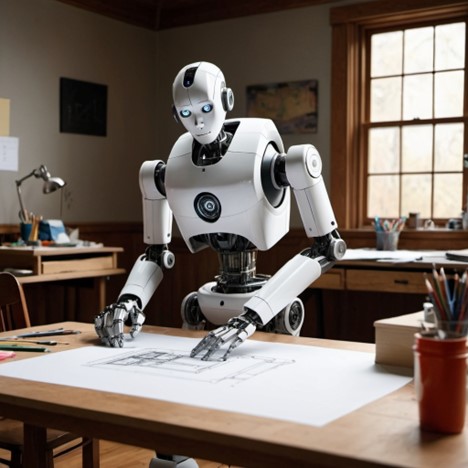The JPR 2024 CAD market report discusses the evolving role of AI in CAD. While progress is evident, current AI tools integrated in CAD software still fall short of actual design capabilities. However, with advancements in AI training and hardware capabilities, a future where CAD design is fully automated seems imminent. Companies like Dell, HP, and Lenovo are poised to support this transition with powerful workstations. Eventually, CAD may become seamlessly integrated into BIM and PLM systems, streamlining the design process and information management. The report anticipates significant disruptions in the CAD industry, with emerging start-ups likely to be swiftly acquired by major players like Autodesk and Dassault.

Our 2024 Worldwide CAD Report is out, and in it, we have a little discussion about how AI aids CAD. And that got me thinking, when does expert-guided AI training evolve from being an aid into full-fledged design? When will we be able to tell our CAD workstation, by voice or text, to create a CAD drawing?
I have no doubt that day is coming and probably faster than any of us can imagine—and it should. There’s a lot of routine in creating a CAD drawing. Routine is what creates experience, and if you believe in Gladwell’s premise, 10,000 hours are required to become an expert or master. That’s a lot of routine. And maybe it will take 10,000 hours of training before a CAD AI system can be realized. But if the training ran nonstop, that would only take 417 days—a little over a year.
However, today it’s not quite there. I asked Dall-E to make some CAD drawings.
Draw a floor plan of a three-bedroom house.

Not bad, in general, but a long way from usable. So I tried again.
Make a CAD line drawing of a two-story home.

Much better, but when I asked for dimensions and callouts, well, then things got a little wonky.

I could have been more explicit and asked for a flat roof, a detached garage, and other features, but it would never be able to complete the task to my satisfaction and certainly not to any architect’s.
I used to draw houses when I was in grade school and even attempted to put dimensions on them. Between high school and college, I had a job as actual draftsman—I was terrible at it—boooring. But when I got my hands on a CAD system for the first time, I went nuts for it and had to be pulled away so others could have a shot.
If AI CAD training takes a similar path, it won’t take long to catch on. I imagine the first version will be a menu of fill in the boxes with design parameters, and you will have to follow certain rules of entry.
You’re going to also need a powerhouse workstation with big, really big, memory to handle the LLM and the resultant CAD model. Dell, HP, and Lenovo will help you there, and just as we’re seeing the hyped AI PC today, we’ll see a real AI workstation in about three years. That will be a truly disruptive moment. 2D CAD dogs will be jumping off the roof and standing in front of trains. Every story or movie you ever saw about robots taking over will be remembered. And astonishingly accurate drawings already linked to BIM and PLM systems will come rolling out as fast as you can input specifications. The time dilatation from idea to creation will shrink to milliseconds.
Companies like the former Onshape, as well as Shapr3D and others that haven’t been started yet, will bring this to the industry and be quickly acquired by CAD leaders Autodesk, Bentley Systems, Dassault, Nemetschek, PTC, and Siemens.
I mentioned our new 177-page 2024 CAD report. The 2027 edition will be just five pages. CAD will disappear from our vocabulary just as AM radio has. It will no longer be a thing, but just an input menu on a design dashboard. You’ll never have to explain what a fillet is again, or an inside hole.
The program of 2027 will be about surface textures and materials, and code compliance. FEA will already have been run before one purchase order is issued for a steel beam or plastic 2×4. Engineering offices are going to have space to sublet, and client meetings will no longer have storyboards or cardboard models. Tablets, linked to a workstation somewhere, will provide the presentation, and it will be the contract. Earthmoving equipment will start up before the client leaves the Zoom meeting, and purchase orders for the material issued before lunch. Purchasing agents will find new jobs as lobbyists and charity solicitors, and no longer take supplier-paid vacations.
Let the training begin.